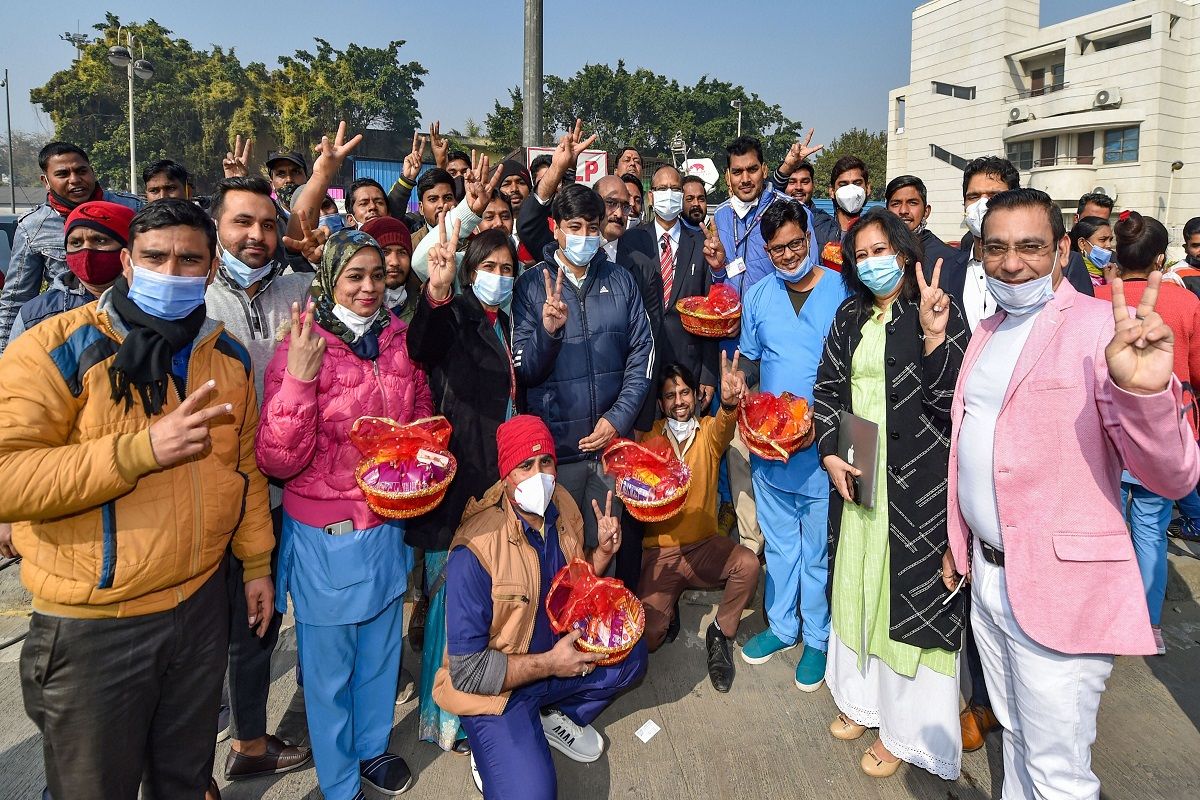New Delhi: A total of 1,65,714 people were vaccinated no Saturday as India began the first phase of the massive coronavirus vaccination drive. Addressing a press briefing, the Union Health Ministry noted that no cases of post-vaccination hospitalisation had been reported so far.
A total of 3,351 sessions were held across the country with both the vaccines. The Serum Institute of India-produced Covishield was supplied to all States/UTs while Bharat Biotech’s COVAXIN was supplied to 12 states, the health ministry noted.
“Since it was the first day of vaccination, a few issues came up- delay in uploading beneficiary list at some session sites and healthcare workers vaccinated though not scheduled for today’s session; Resolutions provided for both the issues,” the ministry stated.
Speaking moments after the completion of Day 1 of the COVID-19 vaccine programme, Union Health Minister Harsh Vardhan expressed “tremendous relief” on the successful first day of the historic coronavirus vaccination drive that began this morning with Manish Kumar, a sanitation worker, who received the first shot.
Terming the COVID-19 vaccines as “Sanjeevani”, Dr Vardhan said that the mega rollout programme is taking India’s fight against the viral disease towards victory.
“The vaccines have been presented before the country like ‘Sanjeevani’ for us, in the fight against COVID-19. The fight was gradually heading towards victory, now it seems almost definite that the step towards victory will be taken quickly,” the health minister said.
Thanking all, including doctors, nurses, healthcare staff, security personnel and journalists, who have been at the frontline in the fight against the pandemic, Vardhan said they ensured India reaches the stage where vaccines are delivered to the people.
Earlier in the day, Prime Minister Narendra Modi launched the world’s largest vaccination drive against the pandemic. The Centre stated that the shots will be offered first to an estimated one crore healthcare workers and around two crore frontline workers, and then to persons above 50 years of age, followed by persons younger than 50 years of age with associated comorbidities.
